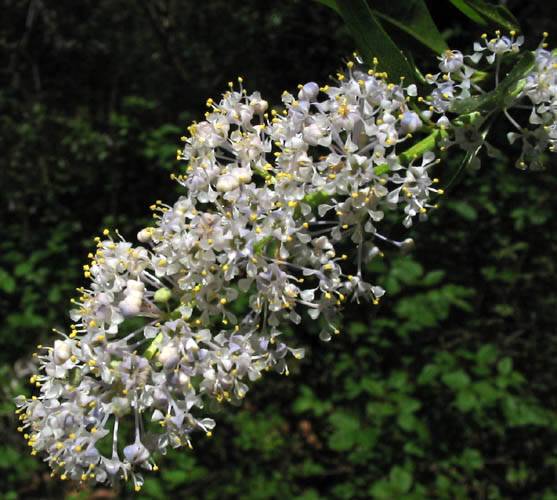
Greenbark ceanothus is a shrub that produces fragrant white to blue flowers. It’s found along the coast and is part of California’s chaparral. Other names for the shrub are redheart and red-heart mountain lilac.
A Hardy Shrub for Your Garden
The green bark of this ceanothus contributed to its most commonly known name. The wood is red, hence the shrub’s other fanciful names.
Ceanothus spinosus blooms between January and the end of June. Extensive pruning won’t harm it and may be necessary to prevent it from growing out of control and becoming straggly. Ceanothus spinosus can be cut back to a short trunk and still regrow.
Shaping Your Ceanothus Spinosus
The greenbark ceanothus is a drought-tolerant shrub that requires the attention of a professional landscaper to look its best. In the wild, it often grows to be 20 feet tall. You can allow your shrub to grow to the height of a small tree and still enjoy clusters of blue or white flowers dripping from the branches. With expert pruning at the right time of year, you can have a bushy shrub thick with flowers.
Temperature Tolerance and Placement
A north-facing, sloping area on your property is the ideal place for ceanothus spinosus. It grows best in cool temperatures but can’t tolerate cold below five degrees Fahrenheit.
This ceanothus grows in rocky soil in the wild and is a great choice if you’re trying to control soil erosion on your cliff-side property. Natural soil is a must for a healthy plant.
Water and Feeding
It’s important that you don’t water your ceanothus spinosus during the summer. Keeping the environment natural increases the shrub’s lifetime. Introducing artificial elements like plant food or fertilizer can weaken this ceanothus, rendering it unable to survive in the face of natural disturbances.
Wildfire Considerations
Ceanothus spinosus presents a low danger of flammability. Removing dead or dying branches from older trees further reduces the danger of flammability.
Importance to Wildlife
Ground fowl like quail often shelter under ceanothus spinosus, and other birds and small wildlife use it for protection from winter winds. Deer may nibble on the evergreen foliage but aren’t significantly bothersome.
The flowers of greenbark ceanothus are of vital importance to native bees. Planting this shrub improves the environment by providing food for pollinators and preventing soil erosion.
Ceanothus spinosus may sound like a complicated plant, but its only requirements are the correct soil and growing environment and professional pruning. If you’d like to learn more about it and why it may be the perfect plant for your coastal property, contact us.
Things to Remember:
• Ceanothus spinosus requires yearly pruning
• Natural soil is a requirement for the health of the shrub
• This shrub is important to native bees and to control soil erosion
